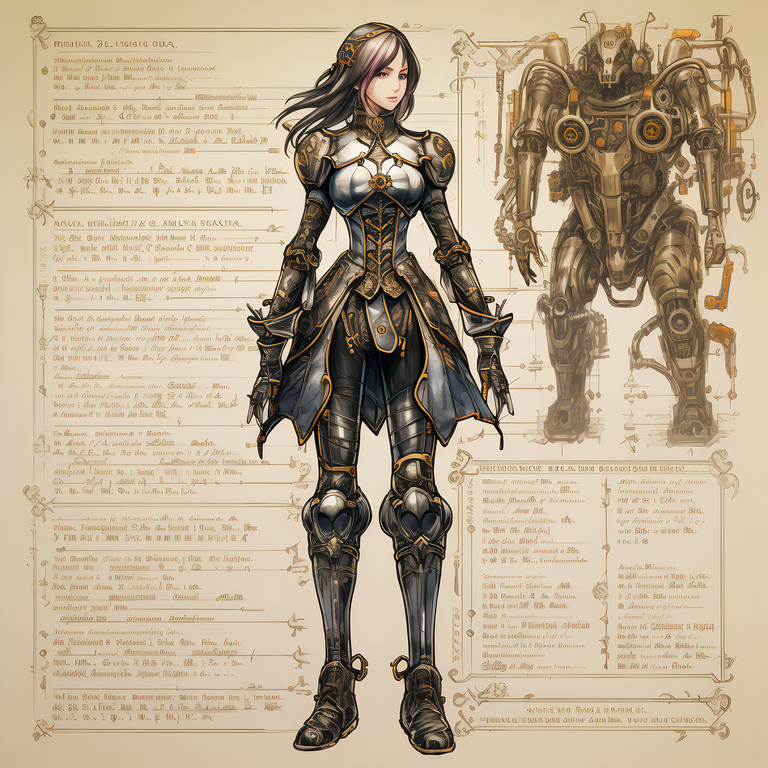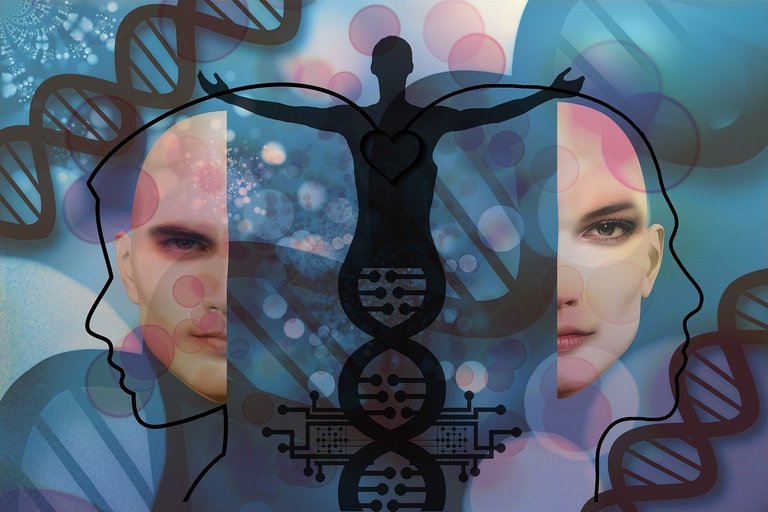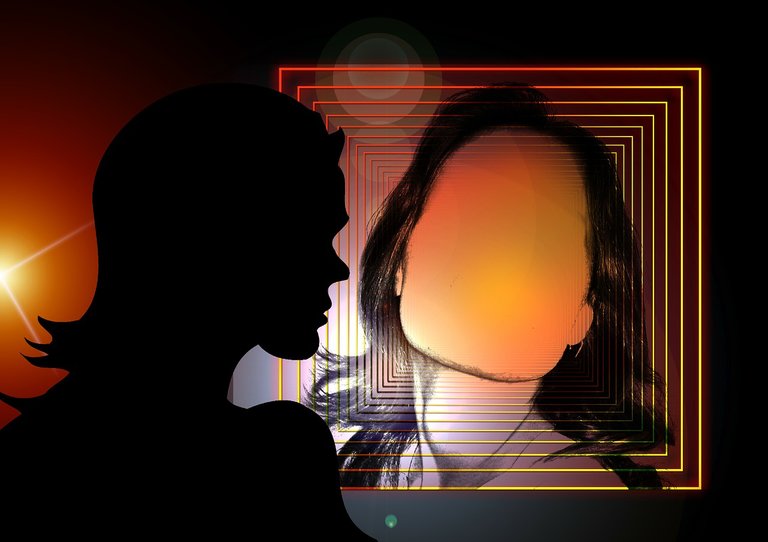Hola amigos de Hive, especialmente a la comunidad de @womentribe. En este día, domingo, pacífico y silencioso, donde la naturaleza me regla cantos de pájaros, brisa fresca y olor de café, me siento inclinada a escribir sobre avatares de la mujer como representación social, buscando su asiento en el ideario colectivo que la dibuja, la perfila y trata de definirla ¿sin éxito; o inclinarla hacia una perspectiva hermenéutica desde su fenomenología social? Nos guiará en este recorrido Carl Gustav Jung y sus arquetipos.
La belleza es un ideal que impone el hombre, y que corresponde a una serie de requisitos que, al satisfacerse convierte a la mujer que los encarna en una inválida, en una cosa.
De la santa a la prostituta: la construcción de los arquetipos femenino.
Antes de situarnos en el tema, quisiera aclarar que debemos separar los símbolos de los arquetipos. Éstos son imágenes que guían patrones universales de comportamiento, que se encuentran en todas las culturas y en todas las épocas; mientras que el símbolo debe tener una convención cultural cuyo significado es compartido.
El valor de los arquetipos estriba en que nos ayudan a comprender el mundo y a nosotros mismos, ya que la internalización de patrones recurrentes en nuestras relaciones sociales, en nuestras experiencias y en nuestra propia conducta, coadyuvan la construcción de la personalidad e imprimen sentido a nuestra existencia.
Un arquetipo (del griego αρχή, arjé, 'fuente', 'principio' u 'origen', y τυπος, tipos, 'impresión' o 'modelo') es el patrón ejemplar del cual se derivan otros objetos, ideas o conceptos.
Arquetipo.
Los arquetipos vienen a ser la expresión de nuestros instintos identificados en imágenes y expresados en comportamientos sociales y actitudes. Cada arquetipo posee un contenido que estimula nuestro inconsciente, ya que éste no es accesible en forma directa; sino que su existencia es inferida a partir de su presencia o manifestaciones en la psique. Es decir, solamente se pueden percibir los arquetipos cuando aparecen como una imagen que se proyecta en la conciencia.
Son muy parecidos a los instintos, ya que nos predisponen a enfocar la vida y vivirla conforme a pautas predispuestas. Es más, los arquetipos organizan las percepciones y las experiencias de tal manera que se ajustan a esas pautas. Jung lo refería cuando señalaba que existen tantos arquetipos como situaciones cotidianas de la vida:
Figuras arquetípicas: madre, héroe, sabio, dios, padre, hijo, por ejemplo.
Eventos arquetípicos: matrimonio, graduación, oscuridad, separación, abandono, nacimiento, muerte, por ejemplo.
Objetos arquetípicos: serpientes, agua, sol, paloma, camino, por ejemplo.
Las dimensiones sociales de la mujer desde la teoría de los arquetipos de Jung.
El prestigioso psicoanalista, padre de la psicología analítica, Carl Gustav Jung, alrededor del año 1.920, acuñó el concepto de arquetipos para señalar parte de las ideas preconcebidas que influencian nuestras actitudes, determinando pautas sociales importantes, como el comportamiento. Con la ayuda del tiempo, estos arquetipos se construyen como procesos culturales que se anidan en la mente de las personas otorgando sentido al quehacer cotidiano.
En estos procesos sociales, conjunto de elementos culturales, como el folklore, la religión, los valores, las creencias, las costumbres y las actitudes, el inconsciente colectivo, concepto elaborado por Jung, partiendo de elementos del inconsciente freudiano , más personales, y las representaciones colectivas de Émile Durkheim, instancia que, siendo inconsciente para el sujeto, se extiende como conciencia colectiva, profundizados posteriormente por Serge Moscovici, el análisis iconográfico de la mujer como arquetipo, está representada en forma colectica como la madre y el ánima.
La mujer, como imagen colectiva a lo largo de la historia representaciones iconográfica de lo femenino.
Para Jung la mujer está representada por dos tipos de arquetipos la madre y el ánima. A través de la formulación del carácter psicosociológico, la mitología femenina ha condensado la idiosincrasia de la mujer a lo largo de la historia, trascendiendo el plano personal para llega a uno colectivo, la construcción de su imagen social.
La madre: se desdobla del sentido propiamente físico, de vivencias personales, para llegar a un significado social y colectivo: valores, protección, fertilidad; pero también muerte, poder destructivo de la naturales y lo desconocido, expectativas que están enraizados en la cultura.
En el devenir histórico y cultural, las primeras formas religiosas, la madre se reviste como tierra fértil, lugar de origen, tumba, porque las cenizas de los muertos vuelven a un envase que simboliza el útero materno. Sin embargo, las categorías que Jung definió para la mujer fueron sabiduría, autoridad, y espiritualidad. Sin embargo, existen representaciones que identifican a la mujer con la filosofía y la justica; aunque el aspecto arquetípico más común anclado a la mujer es bondadoso, la protección, lo que sustenta, el crecimiento, la fertilidad y el alimento.
Así mismo, en la mitología griega se relaciona a la mujer con la primavera, el renacer, las emociones y la ayuda. También se ha relacionado a la mujer con lo secreto, el abismo y lo inevitable. Desde el nacimiento de los arquetipos, la madre ha sido representada a través de la historia en múltiples imágenes colectivas.
El ánima y el animus: en la teoría de los arquetipos de Jung, el ánima constituye la parte femenina del hombre; y el animus, la parte masculina de la mujer. Igualmente se extienden las aristas de vieja/joven, hada/ bruja, santa/ seductora.
Somos totalidad andrógina: lo femenino y lo masculino. Las personas adoptan el rol de su género, con el que nacen físicamente. Sabemos que actualmente no es así siempre, pero es la orientación, digamos, típica.
Las mujeres adoptan su un rol, una persona femenina.
Los hombres adoptan su rol, una persona masculina.
La psique hace una compensación, haciendo una paridad, una contra sexualidad en la vida interior de ser humano. De esta forma las mujeres tienen una contra sexualidad de naturaleza masculina, el ánimus; y los hombres tienen una contra sexualidad de naturaleza femenina, el ánima.
Una redimensión de los roles sociales de estos caracteres arquetípicos es que el ánimus se materializa como la función racional de la mujer y el ánima se materializa como la función irracional del hombre.
Tal vez, hoy en día, al utilizar estas definiciones de Jung interrogamos ciertas susceptibilidades de género. No obstante, es más flexible si partimos de definiciones clásicas y decimos que en una mujer su contra sexualidad es masculina, gobernada por un pensamiento racional, es el ánimus; y en un hombre, su contra sexualidad es femenina, gobernada por un pensamiento irracional, llamada ánima.
Te recomiendo la lectura de El juego del ánima y el animus en El anillo del Pavo Real, de Miguel Rojas, está basado en la bruja de Acserríen, una leyenda costarricense de Zárate. Su trama plasma la teoría de los arquetipos, la femineidad y la masculinidad, anima y animus. Se relata una confrontación que, una vez superada, cristaliza la armonía necesaria para lograr el equilibrio entre los humanos y la naturaleza. Este es un trabajo donde puedes apreciar esta relación
Igualmente, si deseas comprender con mayor profundidad el tema sobre los arquetipos, te recomiendo el libro Arquetipos e inconsciente colectivo, de Carl Gustav Jung. Lo obtienes en forma gratuita aquí. Leerlo es toda una aventura que dotará tu experiencia de un nuevo sentido.
Para finalizar te dejo la siguiente cita...
Las mujeres, grandes mudas de la historia, oscilarán entre ˂˂ Eva y María, pecadora y redentora, arpía conyugal y dama cortés.˃˃
De la santa a la prostituta: la construcción de los arquetipos femenino.
A partir de ella, si así lo quieres, puedes compartir tu respuesta a la siguiente interrogante:
¿Cuál de las imágenes arquetípicas representa mejor a la mujer de hoy?
Traducción: con Google.

Hello Hive friends, especially the @womentribe community. On this day, Sunday, peaceful and silent, where nature rules me with bird songs, fresh breezes and the smell of coffee, I feel inclined to write about the avatars of women as social representation, seeking their place in the collective ideology that draws them. , profiles it and tries to define it **without success; or tilt it towards a hermeneutic perspective from its social phenomenology? ** Will [Carl Gustav Jung] (https://psicologiaymente.com/biografias/carl-gustav-jung) and his archetypes guide us on this journey.
Beauty is an ideal imposed by man, and which corresponds to a series of requirements that, when satisfied, turns the woman who embodies them into an invalid, into a thing.
From the saint to the prostitute: the construction of feminine archetypes.
Before getting into the topic, I would like to clarify that we must separate the symbols from the archetypes. These are images that guide universal patterns of behavior, found in all cultures and in all times; while the symbol must have a cultural convention whose meaning is shared.
The value of archetypes lies in the fact that they help us understand the world and ourselves, since the internalization of recurring patterns in our social relationships, in our experiences and in our own behavior, contributes to the construction of personality and gives meaning to our existence.
An archetype (from the Greek αρχή, arjé, 'source', 'principle' or 'origin', and τυπος, types, 'impression' or 'model') is the exemplary pattern from which other objects, ideas or concepts are derived.
[Archetype.](https://es.wikipedia.org/wiki/Archetype#:~:text=A%20archetype%20del%20greek%20%CE%B1%CF%81%CF%87%CE%AE, other%20objects%2C%20ideas%20o%20concepts=)
Archetypes are the expression of our instincts identified in images and expressed in social behaviors and attitudes. Each archetype has content that stimulates our unconscious, since it is not directly accessible; but rather its existence is inferred from its presence or manifestations in the psyche. That is, archetypes can only be perceived when they appear as an image that is projected into consciousness.
They are very similar to instincts, since they predispose us to approach life and live it according to predisposed guidelines. What's more, archetypes organize perceptions and experiences in such a way that they conform to these patterns. Jung referred to it when he pointed out that there are as many archetypes as there are everyday situations in life:
Archetypal figures: mother, hero, wise man, god, father, son, for example.
Archetypal events: marriage, graduation, darkness, separation, abandonment, birth, death, for example.
Archetypal objects: snakes, water, sun, dove, road, for example.
The social dimensions of women from Jung's theory of archetypes.
The prestigious psychoanalyst, father of analytical psychology, Carl Gustav Jung, around the year 1920, coined the concept of archetypes to point out some of the preconceived ideas that influence our attitudes, determining important social patterns, such as behavior. With the help of time, these archetypes are built as cultural processes that nestle in people's minds, giving meaning to daily tasks.
In these social processes, a set of cultural elements, such as folklore, religion, values, beliefs, customs and attitudes, the collective unconscious, a concept developed by Jung, based on more personal elements of the Freudian unconscious, and the collective representations of Émile Durkheim, an instance that, being unconscious for the subject, extends as collective consciousness, later deepened by Serge Moscovici, the iconographic analysis of woman as an archetype, is represented collectively as the mother and the soul.
Women, as a collective image throughout history, iconographic representations of the feminine.
For Jung, women are represented by two types of archetypes, the mother and the anima. Through the formulation of the psychosociological character, feminine mythology has condensed the idiosyncrasy of women throughout history, transcending the personal level to reach a collective level, the construction of her social image.
The mother: unfolds from the physical sense itself, from personal experiences, to reach a social and collective meaning: values, protection, fertility; but also death, the destructive power of nature and the unknown, expectations that are rooted in culture.
In the historical and cultural development, the first religious forms, the mother is clothed as fertile land, place of origin, tomb, because the ashes of the dead return to a container that symbolizes the maternal womb. However, the categories that Jung defined for women were wisdom, authority, and spirituality. However, there are representations that identify women with philosophy and justice; although the most common archetypal aspect anchored to women is kindness, protection, sustenance, growth, fertility and nourishment.
Likewise, in Greek mythology, women are related to spring, rebirth, emotions and help. Women have also been related to the secret, the abyss and the inevitable. Since the birth of archetypes, the mother has been represented throughout history in multiple collective images.
The anima and the animus: in Jung's theory of archetypes, the anima constitutes the feminine part of the man; and the animus, the masculine part of the woman. Likewise, the edges of old/young, fairy/witch, saint/seductress extend.
We are androgynous totality: the feminine and the masculine. People adopt the role of their gender, the one they are born with physically. We know that currently this is not always the case, but it is the, let's say, typical orientation.
Women adopt a role, a feminine person.
Men adopt their role, a masculine person.
The psyche makes a compensation, creating a parity, a countersexuality in the inner life of a human being. In this way, women have a countersexuality of a masculine nature, the animus; and men have a countersexuality of feminine nature, the anima.
A redimension of the social roles of these archetypal characters is that the animus is materialized as the rational function of women and the anima is materialized as the irrational function of man.
Perhaps, today, by using these Jungian definitions we interrogate certain gender susceptibilities. However, it is more flexible if we start from classic definitions and say that ** in a woman her countersexuality is masculine, governed by rational thought, it is the animus; and in a man, her countersexuality is feminine, governed by an irrational thought, called anima **.
I recommend reading The game of anima and animus in The Ring of the Peacock, by Miguel Rojas, it is based on the witch of Acserríen, a Costa Rican legend from Zárate. Its plot reflects the theory of archetypes, femininity and masculinity, anima and animus. A confrontation is recounted that, once overcome, crystallizes the harmony necessary to achieve balance between humans and nature. This is a work where you can appreciate this relationship
Likewise, if you want to understand the topic of archetypes in greater depth, I recommend the book Archetypes and the Collective Unconscious, by Carl Gustav Jung. You get it for free here. Reading it is an adventure that will give your experience a new meaning.
To finish I leave you the following quote...
Women, great mutes of history, will oscillate between ˂˂ Eve and Mary, sinner and redeemer, marital harpy and courteous lady.˃˃
From the saint to the prostitute: the construction of feminine archetypes.
From there, if you wish, you can share your answer to the following question:
Which of the archetypal images represents today's woman for you?
Translation: with Google.








Congratulations @sandracabrera! You have completed the following achievement on the Hive blockchain And have been rewarded with New badge(s)
Your next target is to reach 5000 comments.
You can view your badges on your board and compare yourself to others in the Ranking
If you no longer want to receive notifications, reply to this comment with the word
STOPCheck out our last posts:
Felicitaciones!
Gracias por deleitarnos con tan magnífica publicación, la cual fue valorada por @Womentribe una comunidad para destacar el valioso potencial del ser humano.
*Sigue nuestras cuentas:
@Womentribe
suscribete aquí @colmena-139925
twitter
Instagram